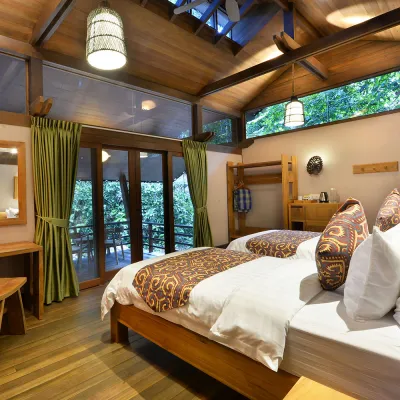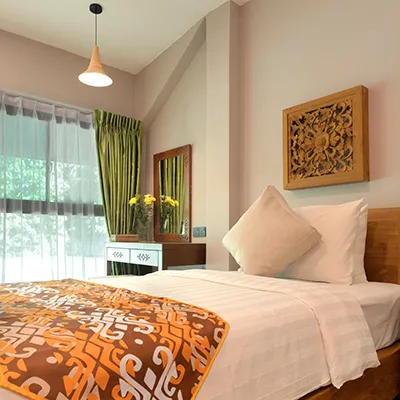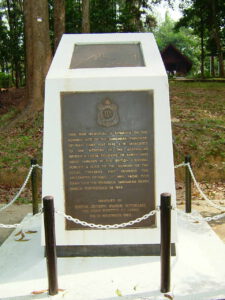 If you enjoy delving into history and learning about other cultures, Borneo’s rich and storied past provides fascinating opportunities.
If you enjoy delving into history and learning about other cultures, Borneo’s rich and storied past provides fascinating opportunities.Borneo’s strategic location and natural wealth meant that it was always destined to play a major role in the events of Southeast Asia. An unique native culture based on hunting, and a legion of adventurers, traders, missionaries and immigrants flowing in over the centuries makes for an engrossing culture with a long and fascinating history.
Historical and cultural tours in Borneo’s cities offer you the chance to browse exotic markets and examine unique local crafts and products, view mosques and churches and other monuments.
Meanwhile, in the hinterland, you can witness the more ancient and deeply rooted culture of the native tribes. One major cultural experience, that was once the preserve of intrepid anthropologists, is to stay overnight in a longhouse.
Historical Tours
Borneo’s long coastline and natural wealth led to the establishment of many coastal trading stations over the centuries.
When the British North Borneo Chartered Company was set up in the late 19th century, Borneo had already witnessed countless other visitors. The Chinese, Indians, Javanese, Portuguese and Dutch, among others, had all paid a visit lured by rubber, timber, pearls, pepper and other desirable commodities.
However the man who really put Borneo on the map was British freebooter James Brooke who was awarded a large tract of land for helping put down a rebellion. Becoming the region’s first White Rajah, he ruled Sarawak until his death in 1868.
Rajah Brooke forged the capital city of Kuching and much remains of his handywork today. Prime examples are the Sarawak Museum, the Chinese Museum, the Brooke Memorial, and the white Fort Margherita, now a police museum.
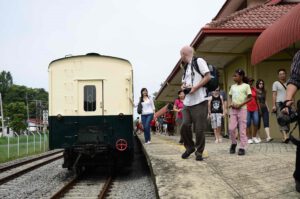
The British presence made Borneo a natural target for the Japanese during WW2. The island became the scene of fierce fighting and appalling cruelty as allied prisoners of war were brutalized and worked to death by the Japanese.
Sabah’s capital Kota Kinabalu (KK) (then called Jesselton) was badly bombed and later occupied by the Japanese. Get a glimpse of the region’s colonial and wartime history at the old Jalan Gaya area. Atkinson’s Clock Tower survived the bombing. Another city relic of this period is Australia Place, so named as it’s the spot Australian liberation forces arrived at the end of the war.
More WW2 memorials can be found outside KK. In particular, Kundasang located some 90 kilometers from the capital is home to the Kundasang War Memorial. It comprises four delightful gardens – the Australian Garden, the English Garden, the Borneo Garden and the Contemplation Garden and Pool
Of particular infamy was the Sandakan prisoner of war camp, starting point for the death marches to Ranau. You can witness testimony to these dark days in the Ranau and Sandakan memorials.
The Sandakan Prisoner of war camp is now a pleasant park with a pavilion containing the camp’s history. It’s the scene of moving memorial services on Anzac Day.
At the end of the war, Sabah and Sarawak were returned to Britain and in 1963 elected to merge with mainland Malaya to form the new nation of Malaysia.
Cultural Tours
Borneo’s long and turbulent history has resulted in a ethnic melting pot that makes for an intriguing culture. Other than indigenous tribes – the Iban and he Bidayuh (previously referred to as Land Dayaks), the colonial era witnessed an influx of Chinese and Malays who settled in the new cities especially the two state capitals Kota Kinbalua and Kuching.
This has imbued Borneo with an unique cultural landscape and one of fascinating contrasts and synergies.
One of the best ways to start to get a taste of the local culture is to visit the two capitals. In these now booming cities, stately mosques blend with colorful Chinese temples and Christian churches. Other treasure troves of past include Sabah Museum in KK.
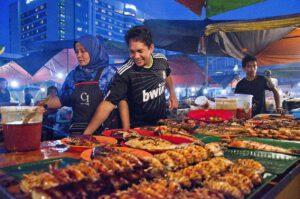
Other urban cultural icon include the many markets. The jewel in the crown is KK’s Night Market. Despite its downtown location, it exudes the heady ambiance of a old bazaar with its dazzling array of local foodstuffs such as fermented prawn, jungle honey and exotic fruits. Sizzling barbecues tempt with a range of local dishes.
You can spot the strong influence of the nearby Philippines at Filipino Market and Handicrafts Market. Here you can barter for pearl jewelry, handbags, elaborate wood carvings and masks, and varied trinkets.
However, to truly understand this fascinating land, you need to get out of the cities and sample the lifestyle of the indigenous tribes for whom Borneo has been home for millennia.
Cultural tours to visit these tribes can be day trips or overnight stays in native longhouses. This way you can sample indigenous food, daily rituals and music in an authentic setting.
One comfortable option is the Kampung Bavanggazo (Rungus Longhouse) in Kudat which is fitted out with mod cons such as showers.
Borneo cultural and or historical tours can be taken alone or in conjunction with wildlife or nature tours and can help you get to heart of these unique and fascinating land.


